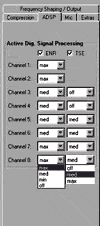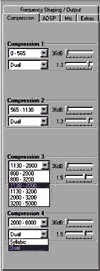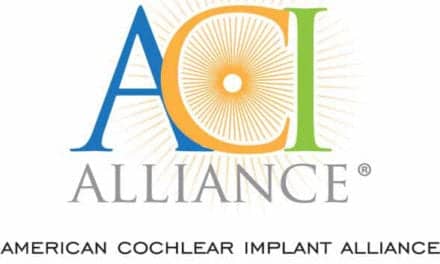In 1986, the Mayo Clinic-Rochester produced their first live televised broadcast of an audiology conference. This conference covered a broad range of topics in the field of audiology. The initial broadcast was free to any university, governmental agency, or individual that wished to participate—there were over 40 sites that requested permission to pick up the program. The program was well received and, with funds donated by the Sheldon Reese Foundation, the programs were then produced for the next two years.
To help offset the cost of later production, a modest fee was charged by the Mayo Clinic. The programs were then repeated consecutively for the next few years. Due to cost and staff availability to organize the program, they were then scheduled for every other year. These audiology programs ranged from broad subject matter to very specific subjects. For example, one year the topics ranged from “Psychology of Deafness” and “The Use of Radiology Techniques in the Diagnosis of VIIIth Tumors” to “Computer Assisted Instruction in Audiology.” In contrast, another year’s program dealt entirely with the use and design of amplification for hearing-impaired individuals, and the presenters were nearly all from the various manufactures (proceedings of this conference were later published in the July 1993 American Journal of Audiology, Vol. 2, No. 2 July 1993). The Mayo Clinic conferences continue. (Author’s Note: For information on the program contact Chris Bauch at Mayo Clinic-Rochester: 507-284-2577.)
Due to the complexity of arranging for the telecast programs and the cost of having individuals make presentations from a single site (initially, in Rochester, Minn), it was decided to originate the program simultaneously from the three Mayo sites. This allowed for some reduction in the costs of transportation and housing, as well as the costs in lost productivity from being out of the office. However, it also made for some difficulty in coordinating the programs, and made it necessary to have a high number of technicians available for production. Time differences also caused some difficulty, but nevertheless the programs were presented in this fashion.
Due to some recent developments in the use of the Internet, and at the request of the then Director of Audiology at Mayo Clinic-Rochester David Fabry, PhD, one of the authors (DER) investigated the use of the Internet to produce such presentations. As we are all aware, the Internet has made possible some unique concepts. Chat rooms and Internet conferences with various national organizations have been tried with varied success. The disadvantage has been the inability to be truly interactive with simultaneous use of audio, video, and white-board graphic presentations. Most previous programs have been based on simple-text.
For those who have looked into the subject, it has been obvious for a number of years that programs (eg, NETMEETING by Microsoft, Meeting Center from Webex, and Instant Messengers such as those from Yahoo and AOL, as well as other programs software manufactures) are used on a regular basis by some large companies. Again, although these more recent programs have made possible better text and graph presentations using white-boards, they are in most cases less than adequate for live video presentations. Another major disadvantage is the need to use a telephone line to connect the various sites.

Presently, through the use of broadband technology, it has become possible to present conferences using audio, video, and white-board, as well as recording and playback features and true interactive processes such as application sharing. Although these newer procedures were primarily designed for in-house media transmission, we decided to see if we could use a system called LiveTutor (www.livetutor.com), specifically their BusinessForum product, to do conference transmission similar to the previous presentations by The Mayo Clinic. LiveTutor products are designed to be flexible. They can access the Internet through the use of modems, and the transmission of a conference is more than adequate. Additionally, when individuals, businesses, or universities transmit their conferences over DSL lines, the greater frame rates that are possible cause better results to be achieved for features such as video.
Our first attempt was conducted through the kindness of Ted Glattke, PhD, from his office at the University of Arizona, David Fabry, PhD, from the office of LiveTutor at Lindon, Utah, and a combined presentation by Doug Chabrias, PhD, dean of Engineering at Brigham Young University, and Victor Bray, PhD, of Sonic Innovations. The latter two presenters started their presentation at BYU and finished up at the office of LiveTutor. The quality of the presentation from the various sites created a good deal of excitement.
However, it was obvious from the feedback received from the various sites that we had some difficulties to overcome. If we were going to use the variety of media for such presentations, DSL lines and institution networks would be highly desirable. The use of the dial-up modems could be used if the transmission of materials were limited to audio and white-board presentations such as Power Point.

The System as a Potential Counseling/Clinical Tool
Tammi Galley, a speech and language pathologist specializing in pediatric aural habilitation in Southern California, has made the point that you do not have to be working at the Mayo Clinic or a university to receive the benefits of a multimedia system. “Individuals, small businesses, colleges, hospitals, and clinics are all candidates to benefit from using LiveTutor’s technology,” says Galley. “Their suite of products could be a useful "long distance" speech therapy tool for independent therapists, as well as corporations and universities.
“I can envision a myriad of applications, particularly for children who need therapy but whose families live in areas where appropriate services are not available.” Galley sees remote locations as a frequent problem for families who have a child with a hearing loss. “[Many] families have to travel long distances to access appropriate or good services, and often this distance limits the amount of services in which they can participate. Combined with some direct contact therapy sessions, I can see how these sessions could be used for parent training and even direct therapy sessions with elementary-aged or older children. The conferencing could additionally make it possible to in-service other professionals (ie, teachers, speech therapists who cannot easily travel) on various topics such as children with a hearing loss in a mainstream classroom.”
Audio & Video
A meeting or Internet session, can include audio and/or video. In order to receive and send audio/video, participants need to have a full duplex audio card (which comes standard on most PCs.), a headset with a microphone, and a PC camera. If a participant does not have the camera or microphone, they can still see and hear the presenter, as long as they have loudspeakers attached to their computers.
Presenter controlled interactivity: All participants in a meeting may be given full permission to collaborate during a meeting. These permissions include:
- Use of white-board tools to mark up the white-board.
- Ability to share programs and computer desktop with fellow meeting participants.
- Ability to speak during the meeting.
The presenter, however, may turn off any of these permissions for any participants.
Presenter control of poll questions: The presenter may poll participants during the meeting. This usually takes two forms:
- The presenter may ask participants to raise their hands in response to a question. (ie, “Raise your hand if I am going too fast.”)
- The presenter may use the built-in polling feature. This feature allows the presenter to ask True/False, Yes/No, Multiple Choice, or short-answer questions, and tabulate the results. The presenter can then send the results to the meeting participants.
Advantages of Internet Over the Telecast:
|
Broadcast presentation with no interactivity: A presenter may set up a meeting with no collaboration tools available. This type of meeting or session is generally known as a “broadcast.” Those who participate in the meeting cannot share screens or mark up slides, cannot speak to any of the participants, or use the chat functionality.
Recorded meetings for later playback: A presenter may choose to record a meeting for later playback. Participants may later go to a Web page and view the meeting at any time. The recorded meeting can also be password protected for security purposes.
For a system to function properly, it is necessary for individuals to download some materials prior to becoming a participant. Things such as firewalls, if not cleared ahead of time, can prevent a computer from being part of the conference. For this reason, it is always best to participate in a pre-conference test. In some of the recent conference presentations, individuals have attempted to participate without the download and the results have been unsatisfactory. To avoid this, a “pre-flight” check is provided to ensure that a participant’s computer has the proper settings, and that all the equipment is installed and functional.. This will allow time to address any problems that would arise.
Summary
It would seem evident that, with the use of such a program arrangement, the communication of procedures and techniques used by hearing care professionals should be readily accessible. Likewise, transmission of fitting procedures recommended by the various manufacturers, as well as new testing and fitting techniques, could be easily presented and understood by individuals at great distances from the factory. The availability of the interactivity should make clarification of testing/fitting procedures possible. Group discussion regarding various controversies might provide for a much quicker resolution of differences. It would be most interesting to have conferences where the issues regarding directional microphones, noise suppression, etc, could be discussed and explained (if possible) by those who espouse the various concepts. In reality it would seem that the only limitation, with systems such as the one presented, is our own imagination.
| This article was submitted to HR by Darrell E. Rose, PhD, an audiologist and former director of audiology at the Mayo Clinic in Rochester, Minn; and Richard M. Medeiros, president and COO of LiveTutor, Linden, Utah. Correspondence can be addressed to HR or Darrell E. Rose, email: [email protected]; or Richard Medeiros, LiveTutor, 333 South 520 W, Ste 270, Linden, UT 84042; www.livetutor.com. |




